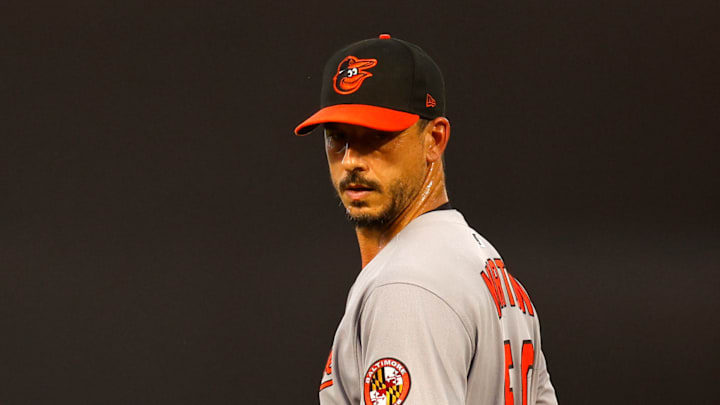The Baltimore Orioles walked into 2025 as if 2024’s late-season wobble was a blip, not a warning. They treated frontline starting pitching like a luxury add-on rather than the spine of a contender, and everything that followed radiated from that single blind spot.
The result wasn’t just a step back; it was a hard correction to the mean, an avoidable slide that became their worst season since 2021. You can talk about bad luck, schedules, or small samples. But the truth is simpler: Baltimore bet the year on stitching together a rotation, and the seams split by Memorial Day.
Letting Corbin Burnes walk set the tone. When you subtract a true No. 1 who gave you nearly 200 high-leverage, problem-solving innings in 2024, you don’t replace him with hope. You replace him with another pillar. Instead, the Orioles chose a patchwork plan — some internal elevation, a couple of mid-tier bets, and a hope that the lineup would paper over the gaps. It felt thrifty. It read as confident. It played as naïve.
Orioles paid the price for skimping on frontline pitching
The rotation blueprint unraveled almost immediately. Zach Eflin, a marquee add at the 2024 trade deadline, pitched to a 5.93 ERA and missed time with a balky back. Tomoyuki Sugano wasn’t a disaster, but a 4.64 ERA over 30 starts is the definition of “fine” — perfectly acceptable for a fifth starter, nowhere near enough when he’s carrying real innings in the top half of the turn. And the Charlie Morton flier, at age 41, cratered at a 5.43 ERA; a gamble that had upside as a story, not as a staff solution. This wasn’t one miss; it was a string of them, all pulling in the same direction.
Tigers reportedly acquire RHP Charlie Morton from the Orioles, per multiple reports including MLB's @Feinsand. pic.twitter.com/DFFO9WqvVP
— MLB (@MLB) July 31, 2025
Then the injury tide hit the in-house plan. Grayson Rodriguez, supposed to be a year-over-year growth engine, missed the entire season with an elbow injury. Kyle Bradish, a top-end arm in 2023, never made it back while finishing Tommy John recovery. Depth is supposed to weather storms; here, it was the storm. By mid-summer, the “next man up” mantra sounded less like resilience and more like resignation.
And the bet that the lineup would carry a thin rotation? It never cashed. Young hitters pressed. Regression stacked on top of pressing. The offense didn’t collapse so much as sputter, long enough lulls to turn every three-run deficit into a mountain. When your staff is built to win 6–5 and the bats go quiet, you’re not in high-variance territory; you’re in scheduled losses. Baltimore asked the lineup to be a bailout fund, and the account ran dry.
So what didn’t the Orioles learn? That ace-level run prevention isn’t a luxury item you tack on after the deals you really want, it’s the first line in the budget. Letting Burnes walk without importing a comparable anchor was a theory test, and the season graded it in red ink.
If 2026 is going to look different, the lesson has to stick: shop at the top of the pitching market, pay for durable innings, and stop pretending “fine” is a strategy. Elevate the floor with reliable mid-rotation bulk, yes, but only after you’ve built a ceiling that can carry October weight. Otherwise, they’ll spend another summer re-learning the same thing the hard way.
